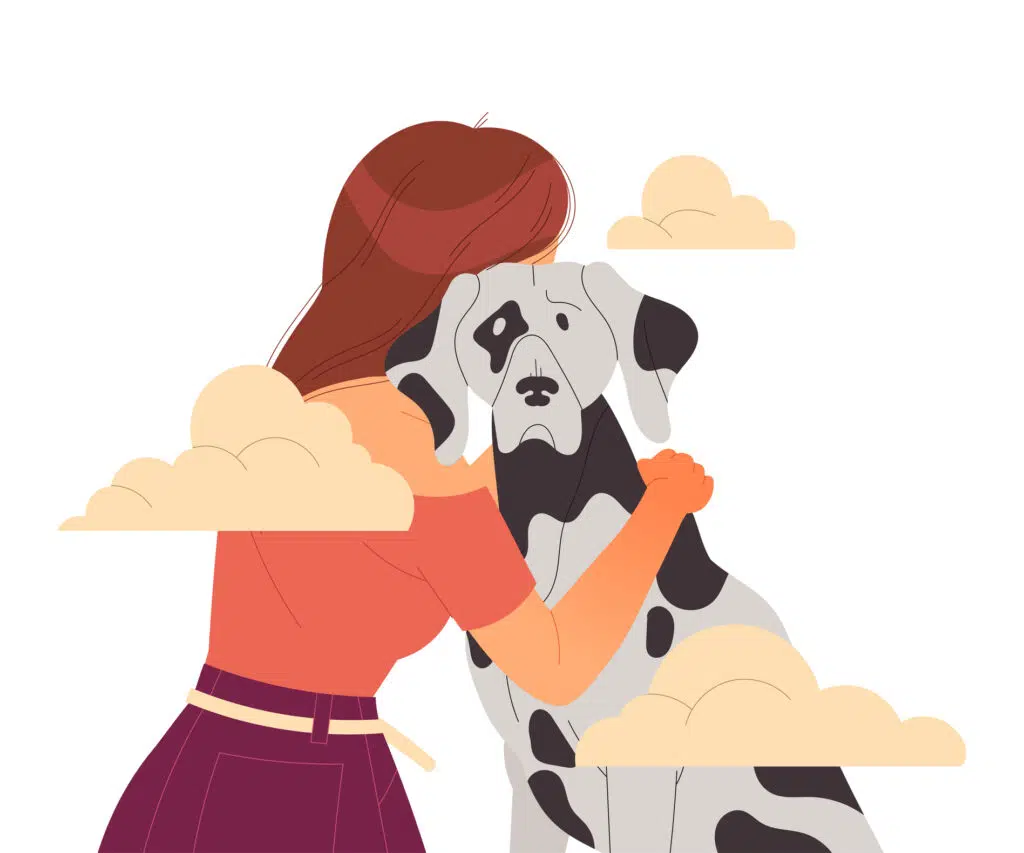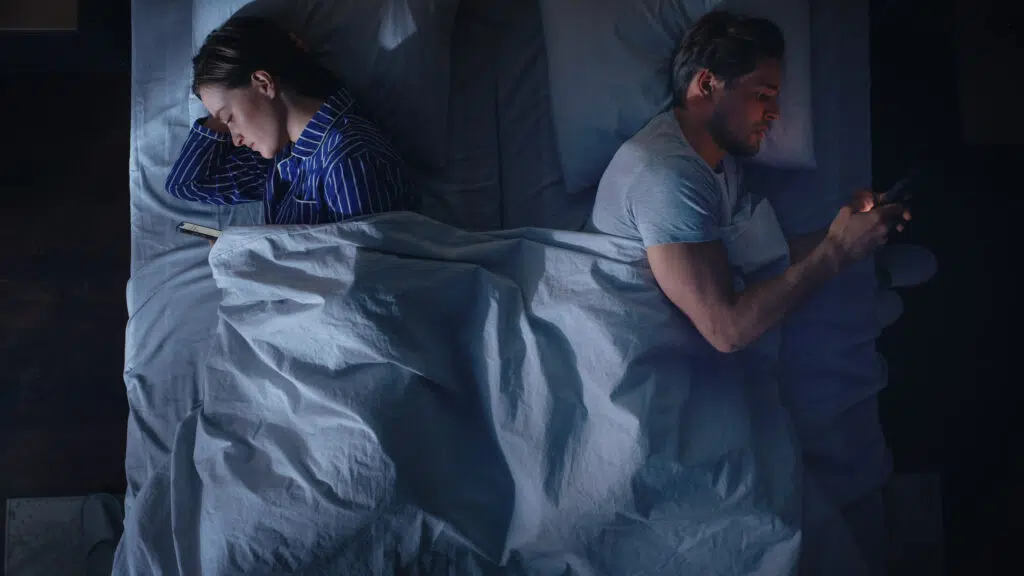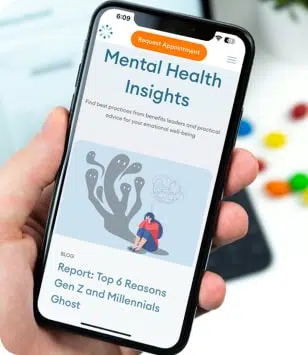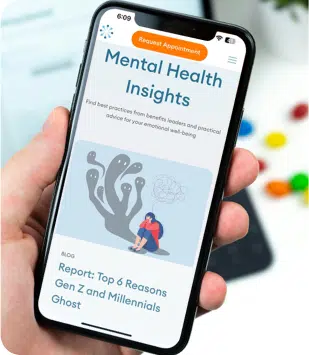Depression vs. Sadness: Recognizing the Difference

Sadness is a normal emotion that’s part of the human experience. Losing a loved one, divorce, financial issues, and troubles at home can all make you sad. While feeling sad happens to us all at some point, depression is different. While sadness and depression are often used interchangeably, they’re not the same. In this article, we look at the difference between depression vs. sadness so you can understand when you may need more help.
Defining Depression and Sadness
Sadness is an emotional state of unhappiness and low mood. It’s a basic human emotion that can range massively in intensity from mild to severe. In situations that feel painful or upsetting, sadness is a normal response. Sadness shouldn’t last forever; it often comes at a time of transition. Sadness is a part of the ups and downs of life, but it’s not depression.
Depression is a mental health disorder, not an emotion. It can affect every part of your life. While sadness can be one of the symptoms of depression, it’s more than low mood. Depression can last much longer and develop for seemingly no reason. It’s not a reaction; it’s a disorder that often needs professional treatment to come out the other side. That’s not to say that sadness can’t be all-encompassing on its own, but it’s important to recognize the difference between sadness and depression.
Symptoms, Duration, and Causes: Differentiating Depression and Sadness
Unfortunately, major depression is a common disorder, with one in ten Americans struggling with depression. Depression is the biggest risk factor for suicide behavior, and too many individuals with depression remain untreated. Although depression is a serious mental disorder, it often goes undiagnosed. A lack of awareness means that many don’t recognize depression in themselves or their loved ones.
One of the easiest ways to understand the differences between depression and sadness is to look at the symptoms, duration, and level of impact it has on an individual.
Signs of depression include:
- Loss of interest in activities you previously enjoyed
- Hopelessness
- No motivation
- Suicidal thoughts or behaviors
- Constant sadness
- Irritability
- Change in sleep or eating patterns
- Feeling worthless
Mental health professionals use the American Psychiatric Association Diagnostic and Statistical Manual of Mental Disorders (DSM-5 criteria) to determine if someone is depressed. The severity of your symptoms and their impact on your life also play a role in getting a diagnosis of depression.
Someone who is sad may experience the following symptoms:
- Crying
- Feel like they want to be alone
- Can still maintain a work or school schedule
- Can continue eating and sleeping
- Start to feel better in days or weeks
While depression and sadness are linked, they are different. Sadness is a human emotion, and depression is a debilitating mental health disorder that can significantly affect your ability to function on a day-to-day basis. A stressful event can cause sadness, whereas depression may not have an obvious cause. Sadness can be a part of depression. If sadness continues long-term, it could be a sign of depression and indicate a need for professional help.
Treatment Options: How to Approach Depression vs. Sadness
Like sadness, everyone’s experience of depression can feel different. How you approach treating and coping with depression vs. sadness will differ.
If someone is feeling sad because of a situation, some things that may help include:
- Speaking to a friend
- Exercising like walking or going for a run
- Watching your favorite movie
- Giving yourself time to feel sad
- Eating healthy foods
- Getting enough sleep
It’s hard to recognize if you’re going through “just a rough patch” or if it’s something more that you need extra help. Many people dismiss how they feel and don’t recognize when they need support.
If you have a continuous low mood or sadness that doesn’t go away after two weeks or have any concerns, then speaking to a mental health professional could help. Often, the first step for getting help for depression is talking to your healthcare provider.
Treatment for depression can include talking therapy, medication, or a combination of the two where you would talk to a therapist and psychiatrist. A psychiatrist is a medical doctor who specializes in mental health disorders and can prescribe medication, whereas a psychologist provides talking therapies.
- Therapy – Psychotherapy encourages you to speak to a mental health therapist to help you identify and change unhealthy thoughts and emotions. The most common type of psychotherapy in the treatment of depression is cognitive behavioral therapy (CBT)
- Medication – antidepressants work by altering chemicals in the brain. There are different types of antidepressants, and finding the one that works for you can take some time.
Impact on Daily Life: How Depression Differs from Sadness
At a basic level, sadness should be brief, and depression can be persistent and last longer. Sadness temporarily impacts your mood, but the impact of depression on daily life can be derailing.
When you’re dealing with a tough situation, you may feel sad, and your thoughts often go back to that feeling. But, typically, you can go about your day, go to work, run errands, and mostly maintain habits like a normal sleeping pattern. Clinical depression can make it feel like your daily life is beyond difficult to endure. Maybe your appetite has changed, your friends and family are noticing a difference in you, and you’ve lost any motivation you previously had doing activities you enjoyed.
Is it hard to do your usual routine? Depression can impact every aspect of your life and severely impact basic functioning. Ultimately, depression is an illness that can be diagnosed and treated.
According to Mental Health America, more than 80% of people treated for depression improve. Recovery from depression is hard and requires a high level of patience. Just like depression, the recovery process is an individual experience. Some can start to feel better in a few weeks, while others can take longer.
Conclusion: The Importance of Understanding Depression vs. Sadness
Many people with depression can feel irritability, sadness, worry, and low energy. It can be difficult to recognize depression as having a down day is normal. But if you’re symptoms persist and feel like they are not going anywhere, it could be a sign of depression. Even if you think your mood change is nothing serious, it’s a good idea to speak with a mental health professional if you have any concerns, no matter how small.
Talking to your healthcare provider is a good first step, as your doctor will perform tests to rule out any conditions that could cause depression symptoms. If how you feel, or the problems you’re experiencing are stopping you from living your life, seeking professional help can truly make a difference. Although it can feel tough to ask for help, a therapist is there to only help and guide you on the next steps for living a healthier and happier life.
Whatever you’re going through, finding a good therapist can help you to figure out what to do next. While it’s normal to feel sadness at times throughout life, depression is a mental disorder that needs professional support and treatment. Understanding how depression can impact mental and physical health can help you recognize warning signs in yourself or a loved one who may need help.
If you or a loved one would benefit from speaking with a therapist or psychiatrist, book an appointment online to start working with one of the compassionate mental health professionals at Thriving Center of Psychology. We have offices in most major cities, including Omaha, Austin, and Boston, and provide psychiatry services to patients throughout New York and California.

Sustaining Love: What to Do When the Honeymoon Phase Fades
There’s nothing quite like that initial attraction and spark where you just can’t get enough of your partner. But as the months and years roll on, it’s normal for relationships to transition through stages, and dynamics can shift.

All a Bad Dream? 1 in 4 Think Their Nightmares Predicted the Future
Americans have a lot on their minds. From navigating daily stress due to work or mental health to grappling with bigger widespread issues like politics, climate change, or crime, it’s safe to say there’s a lot to think about daily. For many, stressors aren’t only encroaching on their minds during waking hours, but also when they try to sleep in the form of nightmares, or bad dreams.

Psychological Challenges with Remote Working
While we can meet our loved ones in person without masks, the pandemic brought some changes that have stuck. Remote working has transformed the workforce. Some companies have chosen a fully remote approach, while others are welcoming their employees back to the office full-time.

Survey: 72% of Americans are Stressing About the Upcoming Presidential Election
Political viewpoints in the U.S. have always been contentious, but is the impact of politics in the United States making it difficult for people to live their everyday lives? With some anticipating another brutal and long campaign season ahead of the upcoming 2024 presidential election, nearly half of Americans say politics is negatively impacting their mental health.




